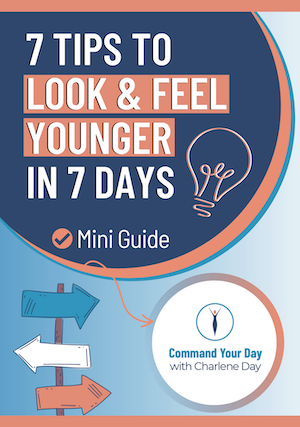 One Food That Can Save the Day
One Food That Can Save the Day
We are faced with numerous environmental challenges these days. Xenoestrogens are particularly dangerous and I wanted to inform you where you are being exposed to these chemicals and the effects they are having to our future generations.
The word “xenoestrogens” means foreign estrogens. They are man-made environmental chemicals, which are taken up by the estrogen receptor sites in the body and seriously interfere with natural biochemical changes. These estrogen-like mimics have an uncanny ability to mimic natural estrogen and/or block natural hormones. They have distinct effects in different species and organs. Xenoestrogens are fat-soluble, not biodegradable or well excreted, and accumulate in fat tissue of animals and humans. They are also dangerously toxic. The principle function of estrogens is to cause cellular proliferation and growth of tissues of the sexual organs and other tissues related to reproduction. So the union of hormone mimics to receptors, triggers genes that stimulate the production of proteins that accelerate cell division. This cell division is leading to a host of health challenges.
Mounting research is now revealing an alarming situation worldwide created by the inundation of these hormone-mimics. In the book, Our Stolen Future, authors Colburn, Dumanoski, and Meyers have identified 51 families of hormone mimics each able to unleash a torrent of effects such as reduced sperm production, cell division and sculpting of the developing brain. These mimics are not only linked to the recent discovery that human sperm counts worldwide have plunged by 50 per cent between 1938 and 1990 but also to altered sexual behaviour, lowered immunity, increased genital deformities, breast, ovarian, uterine, prostate and testicular cancer, and interfered with behavioral and neurological development.
For women, fibrocystic breast disease, polycystic ovarian syndrome, endometriosis, uterine fibroids and pelvic inflammatory diseases are also suspected. These may be influenced by developmental or chronic lifetime exposure to estrogen mimics.
These estrogenic chemicals are everywhere: in the air, water, food, soil, and over-abundantly in our bodies. These chemicals are mostly from the petrochemical industry and unfortunately for our health, petrochemicals are everywhere. Our machines run on petrochemicals such as gasoline and kerosene. Organochlorines are produced by chlorine gas reacting with petroleum hydrocarbons. Today there are organochlorines being used in plastics, pesticides, solvents, dry cleaning agents, refrigerants and other chemicals. Thousands more are by-products of the disinfection of water, bleaching of paper and incineration of chlorinated products. Millions of products, including various plastics (polycarbonated plastics found in babies bottles, toys, food containers and water jugs), PCBs, microchips, medicines, even our synthetic vitamins, clothing, foods, household cleansers, air deodorizers, personal care products (such as cosmetics, antiperspirants, soaps, toothpaste and mouthwash), pesticides and herbicides (such as DDT, dieldrin, heptachlor, etc.) and perfumes, either contain or are made from petrochemicals.
Some proven environmental estrogens used as pesticides, most notably DDT, toxaphene and dicofol, have been banned in most western industrial countries but are still used in many developing nations. Averages of over 25% of all regular Canadian and imported produce show residues of pesticides. In just one example, California raisin and strawberry growers and Washington State apple growers are permitted to use DDT-laced pesticide dicofol on food crops.
Drinking water may be contaminated by other proven estrogenic compounds (nonylphenol (NP), endosulfan) still being used in plastics manufacturing and pesticides. NP from our liquid laundry detergent, all-purpose cleaners, soaps and shampoos also taint our water. Airborne ash from industry or hazardous waste incinerators is often high in hormone disrupters like dioxin (one of the most virulent) as well as lead, mercury, and cadmium. The ash lands on grass or hay eaten by livestock and then is passed along, concentrated, to humans.
Our food is one of the most common pathways for these hormone-disrupting chemicals to gain entry. Processed foods now comprise 80% of our food supply. Packaging, excess sugar and hydrogenated fats, preservatives, artificial colour and flavourings may all be hazardous. For example, Red Dye No. 3, a powerful carcinogen, is still widely used. Plastic containers, styrene cups, food packaging or can liners may contain PVCs (polyvinyl chlorides), alkylphenols, nonylphenols, bisphenol-a and phthalates. These are known xenoestrogens that migrate into food when heated or stored for long periods.
Food animals and dairy fat are a major source of hormonally active chemicals in our food and waterways. The highest concentrations are in beef and dairy products, with high residues of DDT and other chlorinated pesticides, antibiotics, veterinary drugs and growth-stimulating sex hormones. Fish from industrialized waterways are contaminated with a wide range of xenoestrogens. All Great Lakes salmon show enlarged thyroid glands in recent years.
Taking it one step further, synthetic estrogens are also being dumped into the waterways through the urine of women and enter our food chain. This has also increased our levels of estrogen exposure.
So we see xenoestrogens are everywhere and that we are being bombarded with them. Many women are considered “estrogen dominate” because of our over exposure to these foreign estrogens. Because this is a big topic, I will deal with this subject next week. What I want to cover this week is that there is a safe alternative that can actually protect us from this over exposure.
Plant estrogens, called phytoestrogens, compete with natural and xenoestrogens for binding to receptors in the body. The phytoestrogens protect us from the toxic, synthetic petrochemical estrogenic compounds. They act as weak estrogens and appear to produce estrogen effects in postmenopausal women and anti-estrogen effects in premenopausal women. Phytoestrogens thus have this ability to act as “balancers” – by raising low levels of estrogen and by lowering high levels by replacing a strong estrogen with a weaker one.
Significant amounts of phytoestrogens are found in many foods including soy products, flaxseeds, chickpeas, cashews, oats, corn, apples, and almonds. One of the best sources of phytoestrogens is called isoflavones found in soy. By eating these foods on a daily basis, we can protect the cell receptor sites from the xenoestrogens. This is an important awareness as most people do not know the benefits of these foods. Phytoestrogens are therefore the “good guys” and can counteract the bad effects of the “bad guys”. So do yourself a favour and protect your cell receptor sites on a daily basis.
Every morning I take my water washed soy protein powder and mix it with water. After I drink it, I know that I have protected my cell receptor sites for the day. I highly recommend that you do the same for increased health and wellness. Feel free to contact me for more information on the difference in the brands of soy protein powder.
To your health!
Charlene Day




Polystyrene containers for food have been used safely for more than 50 years, having been tested and deemed safe by government agencies. Any minuscule amount of styrene that may migrate out of polystyrene containers into food is far too small to be of any health concern. Moreover, styrene occurs naturally in many foodstuffs, including cinnamon, beef, coffee and strawberries.
Priscilla Briones for the Styrene Information and Research Center (SIRC), Arlington, Virginia. SIRC (www.styrene.org) is a trade association that represents interests of the North American styrene industry with its mission being the collection, development, analysis and communication of pertinent information on styrene.
Hi Priscilla,
Thank you for your comment. Everyone will have a different perception around this. Basically plastics in the world are kind of like cigarettes. Smoking cigarettes eventually can lead to death but it takes a long time. The overabundance of plastics in the world are not outright killing us but they are leading us to a slow death. I would recommend reading the book, Slow Death by Rubber Duck: How the Toxic Chemistry of Everyday Life Affects Our Health by Rick Smith , Bruce Lourie, and Sarah Dopp